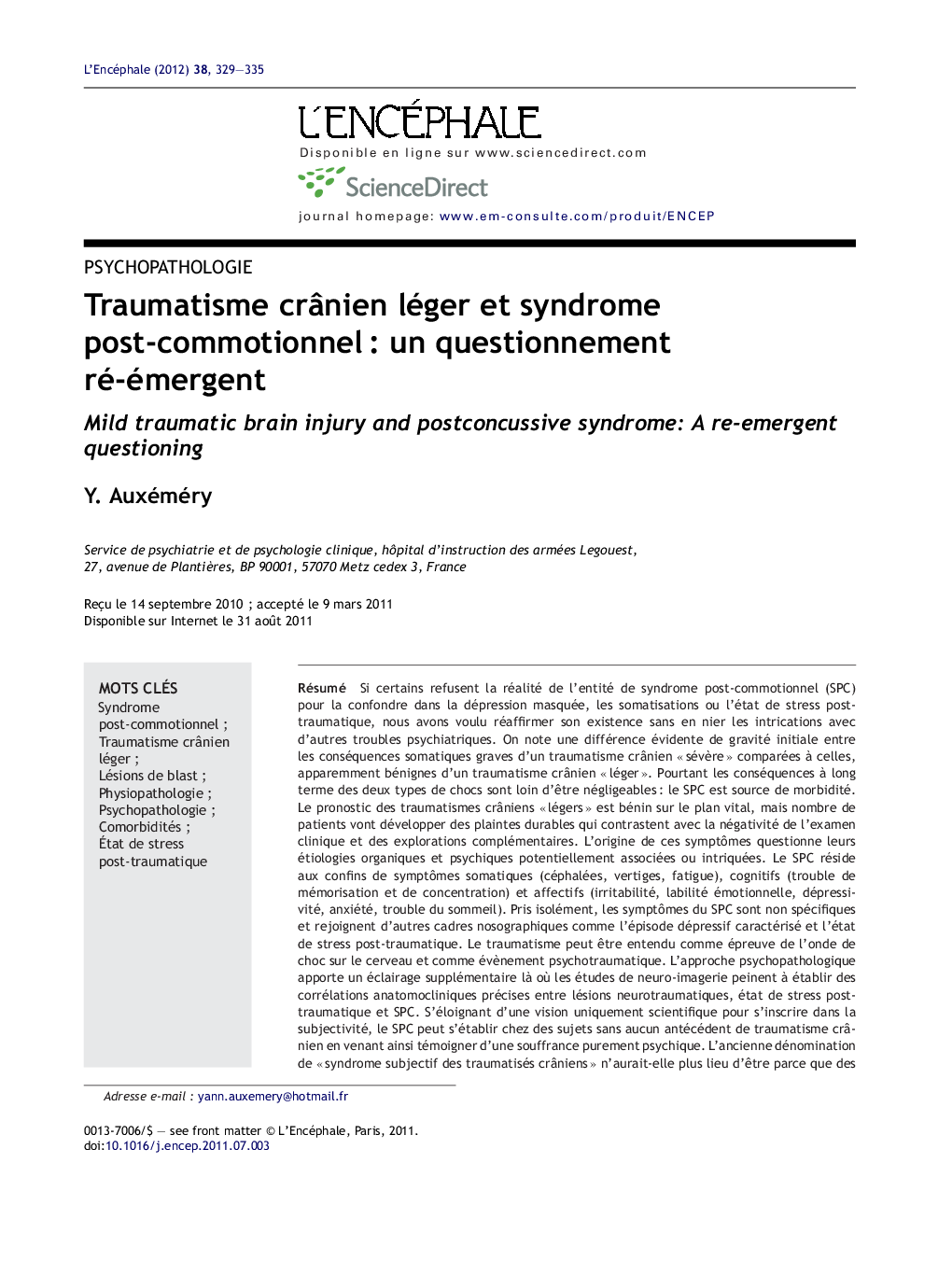| Article ID | Journal | Published Year | Pages | File Type |
|---|---|---|---|---|
| 4181802 | L'Encéphale | 2012 | 7 Pages |
Abstract
Cerebral imaging will allow the mechanisms concerned in cranial trauma to be better understood and thus may allow these mechanisms to be linked with co-morbid post-traumatic psychiatric disorders such as depression. The pyschopathological approach provides supplementary enlightenment where neuroimaging studies struggle to establish precise anatomoclinical correlations between neurotraumatic lesions, state of post-traumatic stress, and PCS. Moving away from a purely scientific view to focus on subjectivity, PCS can establish itself in subjects with no history of head trauma thus showing purely psychic suffering. Is the former name of “subjective post-head injury syndrome” no longer pertinent since the neurobiological affections can be objectified? Yet, the latter does not necessarily explain the somatic symptoms. Beyond any opposition of a psychic or somatic causality, it shows the complexity of this interaction. Admittedly, looking for a neuropathological affection is particularly cardinal to propose an aetiological model and objectify the lesions, which should be documented using a forensic approach. However, within the context of treatment, this theoretical division of the brain and the mind becomes less operative: the psychotherapeutic support will on the contrary back the indivisibility of the subject, he/she, who faced the “clatter”.
Keywords
Related Topics
Health Sciences
Medicine and Dentistry
Psychiatry and Mental Health
Authors
Y. Auxéméry,
